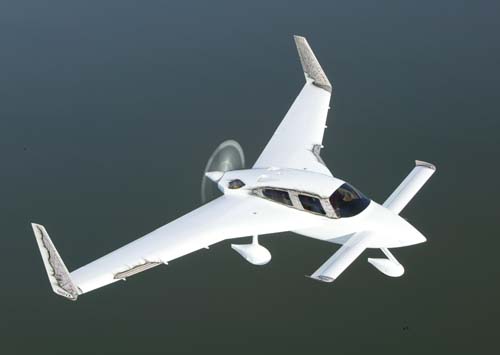Functions of a tail-plane or horizontal stabilizer
A tailplane, which is also known as the horizontal stabilizer, performs when an aircraft is disturbed in pitch. If there are some disturbances forces the nose up or down, the horizontal stabilizer will produce a counteracting force to push the nose to the opposite direction and restore equilibrium. (Source: Aerospaceweb)
Types of horizontal stabilizers
Tail plane
The tail-plane is so far the most common design adopted method to archieve balance during the flight. It is located some distance aft of the main plane. (The tail section comprising the horizontal and vertical stabilizer and the tail cone is known as empennage.) (Source: Tailplane)
Canard

Canard Wings (Source: Singularity)
The horizontal stabilizer is located forward of main plane on some designs. The fore-plane or "forward tail" is known as canard. Typically the canard is rigged at a higher angle of incidence to that of the main plane. At high angles of attack, it stalls before the main plane thereby losing lift and putting the aircraft in a nose-down pitch. (Source: Singularity)
"Tailless aircraft"

Tailless aircraft (Source: Defence.pk)
Yet some aircraft designs have no obvious horizontal stabilizers. Concorde, AVRO Arrow and the Space Shuttle are three notable examples of aircraft that fall in this category. Their similarity is that all are supersonic aircraft. (Source: Century of Flight)
Understanding the difference between the fixed, adjustable and variable incidence tail-planes
Fixed tail-plane
A fixed tail-plane is one that it is red at some fixed incidence angle relative to the fuselage. Such a design is not practical unless there are "trim devices" to make slight adjustments to aircraft attitude from time to time to maintain level flight as fuel is used.
Adjustable tail-plane
An adjustable tail-plane comprises trailing edge devices (similar to flaps) that enable changes to camber of the horizontal stabilizer. Camber may be changed so as to provide a desired load (upward or downward) on teh tail so as to "trim aircraft" to keep its fuselage parallel to the flight path. The design comprising a fixed horizontal stabilizer and adjustable edge devices (for control in pitch) is very common with low speed aircraft. Figure 1-7, shows the adjustable tail plane.

Adjustable (or variable chamber) tail plane (Source: American's Flyer)
References
Aerospaceweb Retrieved on 29th August 2012
Tailplane Retrieved on 29th August 2012
Singularity Retrieved on 29th August 2012
Century of Flight Retrieved on 29th August 2012
Defence.pk Retrieved on 29th August 2012
American's Flyer Retrieved on 30th August 2012









